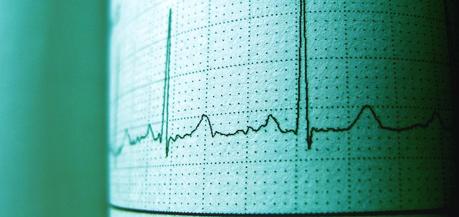
Heart arrhythmia, or irregular heartbeat, is often overlooked because it does not cause any physical symptoms in the majority of patients. However, it can be dangerous to your health if left untreated, so it's important that you know what is heart arrhythmia and how to treat it if you have it.
Here's what you need to know about heart arrhythmia and how you can get relief from it.
What is heart arrhythmia?
Arrhythmia describes any abnormal rhythm of your heartbeat. Arrhythmias are far more common than most people realize. Millions of people in America alone have an arrhythmia and don't even know it.
Some arrhythmias can be harmless, but some can lead to complications including sudden cardiac death. Most arrhythmias do not cause any symptoms.
When they do, they may feel like a fluttering sensation in your chest or a racing feeling that may come and go.
If you experience these types of sensations, it's important to see a doctor right away so that you can get tested for an arrhythmia and treated if necessary.
Types:
There are three main types of arrhythmias:
- supraventricular tachycardia (SVT);
- ventricular tachycardia; and
- ventricular fibrillation.
All three occur as a result of erratic electrical signals in different parts of your heart. SVT occurs when your heart rate speeds up to more than 100 beats per minute.
Ventricular tachycardia can be either fast or slow and happens when there's an abnormal heartbeat in one or both of your ventricles-the lower chambers that pump blood to your lungs and body. Ventricular fibrillation occurs when rapid, uncoordinated contractions cause blood flow to stop completely.
Causes of heart arrhythmia:
Arrhythmias are caused by abnormal electrical activity in your heart. Arrhythmias can result from inherited (genetic) conditions such as long QT syndrome or Brugada syndrome; they can also be caused by structural abnormalities, coronary artery disease and hypertension.
Although not as common, arrhythmias can also be caused by problems with your thyroid gland and electrolyte imbalances.
The most common cause of arrhythmias is scar tissue that forms around a damaged area of your heart after a heart attack.
This scar tissue disrupts normal electrical impulses and can lead to an irregular heartbeat. It's important to note that some people have no identifiable cause for their arrhythmia; these cases are called idiopathic (or primary) atrial fibrillation.
Common symptoms of heart arrhythmia:
The most common arrhythmias are paroxysmal supraventricular tachycardia and atrial fibrillation. Other symptoms may include dizziness and/or fainting spells.
Atrial fibrillation can cause blood clots to form in your heart. If one of these clots breaks free and travels to your brain, it can lead to a stroke or other health problems.
In some cases, an irregular heartbeat can be a symptom of another underlying condition that causes poor circulation throughout your body.
This condition is known as peripheral vascular disease (PVD). If you have PVD, you might notice that your extremities feel cold or numb when they're exposed to cold temperatures.
Diagnosis of cardiac arrhythmia:
Diagnosing cardiac arrhythmia with a 12-lead ECG can be done in a number of ways.
The first step in diagnosing cardiac arrhythmia involves identifying whether or not you have tachycardia (an abnormally fast heart rate) or bradycardia (an abnormally slow heartbeat).
If a patient's resting heart rate is over 100 beats per minute or less than 60 beats per minute, they have tachycardia and bradycardia respectively.
Next, your doctor will look for other abnormalities on your ECG tracing such as P waves, QRS complexes and T waves to help determine if there are any issues with your heart rhythm.
Finally, if necessary your doctor may order an echocardiogram or Holter monitor to confirm their diagnosis.
Treatments and management:
Arrhythmia can be treated by correcting its underlying cause. Medications such as digoxin and β-blockers are prescribed to help stabilize your heartbeat.
Surgery may also be an option in some cases of ventricular fibrillation. In addition, a pacemaker or implantable defibrillator may be implanted if there's a risk of sudden death.
It's important to note that these devices aren't always permanent solutions-they might need to be replaced at some point. Still, they can offer relief from life-threatening symptoms while doctors try to find more effective long-term treatments.
If you notice any changes in your heartbeat, it's critical that you see a doctor immediately. Your physician will perform diagnostic tests (like blood tests and electrocardiograms) to determine what's causing your arrhythmia and create a treatment plan for you based on those results.
Conclusion
An arrhythmia is a condition in which your heartbeat does not go through a regular pattern. When your heartbeat becomes irregular it can cause blood flow to be inadequate to meet all of your body's needs. While some types of arrhythmias are harmless and can even be asymptomatic (the individual has no knowledge that anything is wrong), others may require treatment because they can lead to serious complications.
Some common types of arrhythmias include atrial fibrillation, ventricular tachycardia, premature ventricular contractions, bradycardia, and ectopic atrial tachycardia. In order to determine if you have an arrhythmia you should consult with your doctor or another medical professional who can perform an electrocardiogram (EKG) or Holter monitor test. These tests help determine if there are any irregularities in your heartbeat.
Related Articles:
- Aortic aneurysm: Symptoms, causes, diagnosis, and treatments
- Systemic lupus erythematosus (SLE): Causes, symptoms, and treatments
- Angelman syndrome: Causes, symptoms and treatments
- Legionnaires' disease: What is it and how can you prevent it?
- Wilson's disease: Causes, symptoms, prevention and treatments
- Nephrotic Syndrome: Causes, Symptoms, Treatment and Diet Chart
References:
- Heart-brain interactions in cardiac arrhythmia; P Taggart, H Critchley and P D Lambiase.
- Arrhythmia risk stratification of patients after myocardial infarction using personalized heart models; Hermenegild J. Arevalo, Fijoy Vadakkumpadan, Eliseo Guallar and Alexander Jebb; Nature Communications volume 7, Article number: 11437 (2016).
- A Heart for Diversity: Simulating Variability in Cardiac Arrhythmia Research; Haibo Ni and Eleonora Grandi.
- Medical Decision Support System for Diagnosis of Heart Arrhythmia using DWT and Random Forests Classifier; Emina Alickovic & Abdulhamit Subasi; Journal of Medical Systems volume 40, Article number: 108 (2016).

